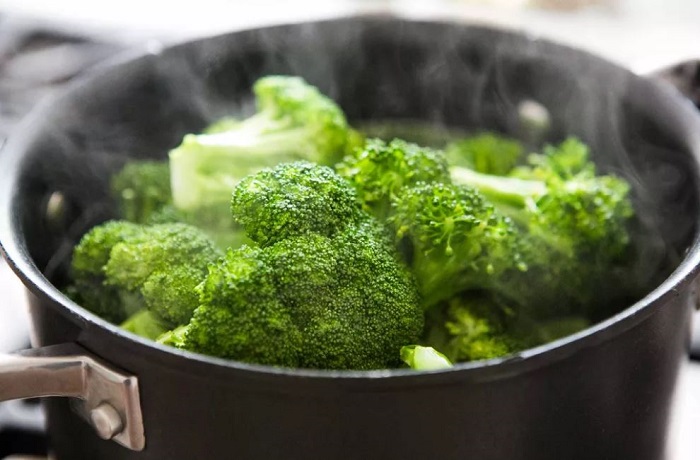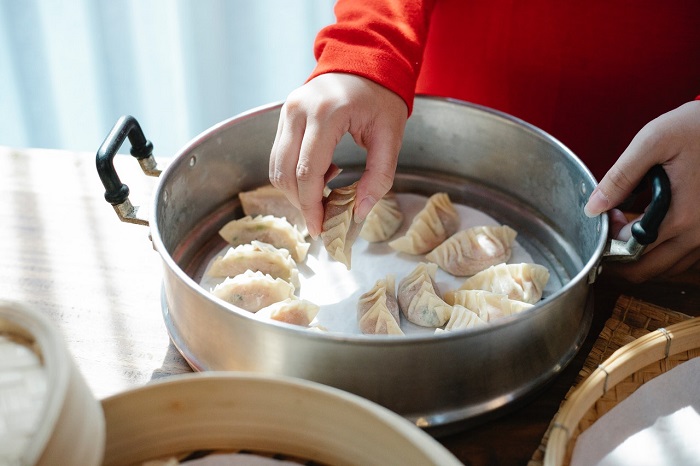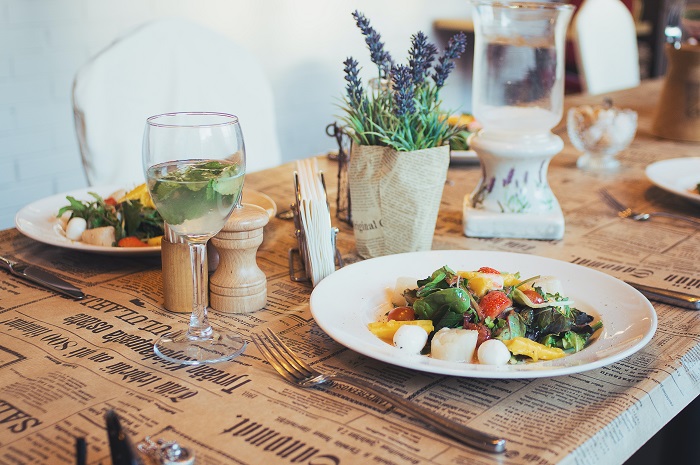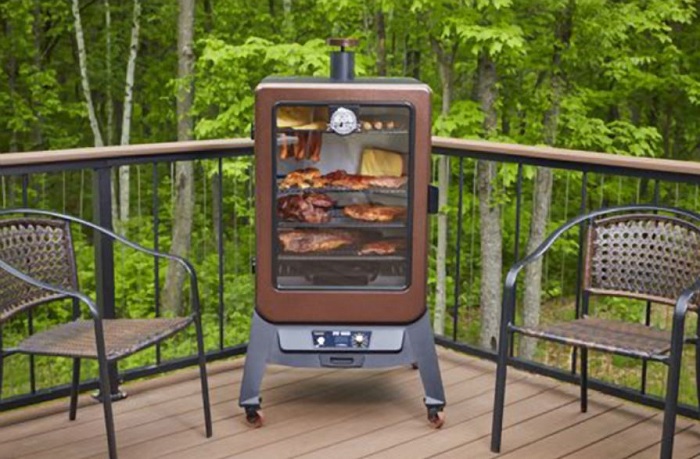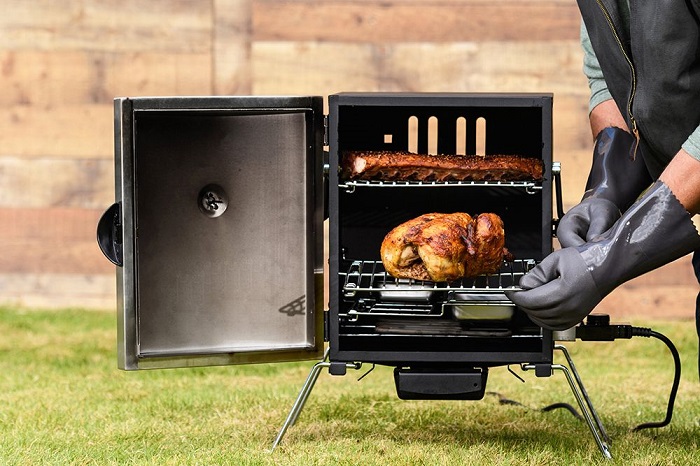How to Steam Without a Steamer? Good Tips in 2023
A steam is the best way to cook a perfect meal. This article will discuss How to Steam Without a Steamer and results without a steamer. There are many different ways to do this, including using aluminum foil or water in pots and pans on your stovetop, but don’t forget about microwaving!
If you’re looking for other substitutes that might be more convenient for use at home, try these ideas: rice cooker pot with lid, electric skillet with lid, or crockpot with lid.
The goal of this blog post is not only to educate consumers on how they can still enjoy their favorite dishes without a steamer but also share tips and tricks that will help them achieve great results in 2022.
Steam can be defined as a vapor when the water is heated, it turns into steam. There are many ways to create that steam and you can also make use of extracts from herbs or leaves. Steam can help loosen up stiff muscles easily and painlessly. The heat helps in loosening up muscle tension and opens up the pores but it also helps encourage blood circulation which allows oxygen to be supplied in the body.
Steaming is a simple yet highly effective way to cook food. However, if you do not have steamers at home then you can simply improvise with other alternatives or go all out and purchase one of the best electric steamers available for sale online.
How to Steam Without A Steamer?
We can steam follow these ways:
1. The Boil Method:
This is a method that many people will think of first when they do not have steaming equipment at home or cannot afford it. It makes use of the principle that boiling water forms steam as well, although it is not as effective and powerful.
Therefore, to get the best out of this method you are required to use a big pot with several gallons of water and ensure that there is sufficient boiling taking place within it continuously for long enough to produce certain amounts of steam in the room where you are cooking food.
2. Using aluminum foil:
Alternative Way For your convenience you can buy plenty of aluminum foil from any local store and then divide them into sheets depending on much you are going to use for cooking. The aluminum foil sheets will allow the steam to easily pass through and penetrate the food that you will be cooking in 2022.
3. Try Cooking In A Plastic Bag:
Many people do not know that you can actually make use of plastic bags when it comes to steaming your food without a rack or steamer. For this method all you will need is hessian cloth, cling film as well as an oven safe container which allows you to cook food using indirect heat, away from the direct source of heat.
This is one of the best ways to cook dishes like corn on cob since they can end up getting burned if left directly under the source of heat for longer periods of time. The way to go about this is to cut the hessian cloth to fit your container.
Next you should pour in some water along with a little bit of lemon juice and then place the dish that you want to steam into the top section of the container before sealing it off using the cling film. Then all you need to do is put this into an oven at about two hundred degrees Fahrenheit and wait for around forty five minutes or so.
The steam will continue cooking food through condensation, just make sure that there is enough heat inside the bag before placing it inside since cold air can stop formation of steam and cause problems when cooking. This method also works well for baking potatoes as well because they usually take a lot longer to be cooked compared to other foods like rice that can be steamed in a matter of minutes.
4. The Salad Spinner Method:
This is a method that most people tend to forget about or overlook but this technique is very effective for those who are looking for ways on how they can steam without a steamer and cannot afford the time, cost or energy required in using other alternatives out there.
5. Use A Wok At Home:
Another common cooking utensil at home will be the wok also known as a Chinese pan. This is another very effective device that you can use to theoretically steam food without the need of an actual steamer.
One good thing about using this equipment is because it has a wide surface area, allowing for plenty of water to evaporate easily and quickly so you should not have any problems when cooking foods like rice and vegetables inside them.
6. Ramekins:
Another great way to cook your food thoroughly while also keeping in all the nutrients it contains would be by making use of ramekins or casserole dishes. These usually come with lids which are normally made out of glass or ceramic and as soon as you pour in some water, the steam will get trapped inside the container along with the food.
7. Use Steel Pans:
Cooking steamed fish using this method is usually very popular amongst professional chefs since it offers a great way to avoid overcooking your food and losing all those precious vitamins it contains. Using this technique would also require some butane gas which can be bought from any local hardware store.
8. Put Veggies In Your Rice:
Another common way for cooking vegetables is by adding them directly into your rice at home before cooking everything together in a large pan filled with plenty of water. This will help make the final meal a lot healthier since you will add lots of nutrients to your rice as well as keeping them fresh and on the go.
9. Use Your Vegetable Steamer:
Another popular way for cooking vegetables would be by using a vegetable steamer which is usually available at most homes nowadays. It should really not take too long before you can get these things, all you have to do is use it in conjunction with another common kitchen item like an oven or pressure cooker.
10. The Bento Box Method:
If you are looking for something that works well with almost any type of food out there then this method might just work perfectly for you. What you need to do in order to create this would be by making use of a bigger container and place several small boxes inside it.
For example, you can use a bowl which is big enough to hold your vegetables and then place them inside one box while using another for your meat or fish which you would add closer to the top. Finally, make sure that all the containers are sealed properly before cooking everything together so that the steam does not escape from any openings.
12. The Rice Bowl Method:
This technique is very similar to what was discussed earlier on as well however there are some adjustments that will need to be made such as how much water is placed in each container and how fast they should be cooked accordingly.
Tips and guides on How to Steam Without a Steamer.
1. Why we need to steam foods?
Generally, foods are steamed in order to ensure the locking in of the flavors, nutrients as well as color. There is also a need for the food to be cooked gently and at a slow pace without making them lose their texture or moisture inside. This is especially important for those who wish to consume more vegetables since these types of foods can easily become soggy or lose all of its flavor underneath high heat.
In most cases, heating up food that is wrapped with plastic will result in leaching out chemicals from it into your food which may actually then lead to serious health concerns. In this case, steaming may help you reduce such risks by ensuring that there really would be no plastic touching your food while it cooks but instead they would only be in contact with steam.
In order to enjoy the benefits that steaming offers it is important that you find a good steamer for your food. You need to look at how well each of these products work and if they can offer satisfactory results for your cooking needs so take the time to look around and compare different options before settling on the final one that you wish to use.
2. What is steaming different with fry? Which one is good for health?
Steaming vs frying steaming is healthy because oil or fat does not come into contact with the food, while frying batters or coats the food in oils.
3. When i steam my vegetable, do they lose nutrients?
Frying can destroy up to 80% of vitamins and minerals in foods. However, when we steam our vegetables most of the nutrients are not destroyed since there is no direct heat present during this process. Remember that you must throw away water that has been used to boil your vegetables and use fresh water when boiling it again (this is only if your steamer allows you to do so).
4. I don’t have a rice cooker but i have a big pot with a glass lid can i use this to do rice?
What you can do is use the big pot with the glass lid and fill it with water until it is about 2/3 full. To do this successfully, place your rice together with any vegetables or other ingredients that you may want to put into it inside of a colander located in the middle of the pot before adding enough water on top of everything so that when steam comes up from underneath, your food will not dry out or get burned.
After that, just wait for your food to cook without having to worry about it being undercooked or overcooked because once all of the water has evaporated completely then everything should be fully cooked already. What is important here is for you to make sure that you keep a watchful eye over the entire process so that you can remove it from heat once everything is done cooking.
5. Can you steam with a colander?
Yes indeedy.
What you need:
a. A colander that can rest on the top of a pot or pan. The one that my mum uses for steaming, is an enamel-coated metal bowl with handles, which she balances over her big stock pot. It’s very similar to this one .
b. A lid for your pan/pot (here it would be the cover for the pot). To secure the colander and keep it from turning during cooking time!
c. Something to weight down the vegetables so they don’t float back up. Here I used little glass bowls filled with water as weights. If you don’t have such an expendable item in hand – say some sweeties whose taking up space in your kitchen – you can use rocks, marbles, or whatever else floats.
d. The actual vegetables and/or seafood to be steamed. Here I’ve used some Chinese mushrooms (which look like black wood ear), baby bak choy, clams and prawns.
To steam:
a. Bring your pot of water to a boil first. Then take the lid off, carefully place your colander on top of the pot and drop in your veggies or seafood (if cooking more than one item). Put the lid back on and cover it with foil if you don’t have another lid that fits inside this one. This prevents burning yourself but allows for some steam escape.
b. When water returns to a boil, put on your weights and let the steaming begin.
c. Depending on what you’re cooking for how long, you may need to add more water during cooking process. It’s best to always have extra water than run out, so if you can plan it in advance and keep an eye on the pot as well as your timer – do it!
d. Keep adding little bits of weight every now and then to make sure that everything stays down under all that steam while cooking. This is also why I used glass bowls instead of just rocks: one bowl gets filled up with water, covered with clingfilm (to prevent splashes), placed inside another bowl then into the pot surrounding the veggies/seafood.
e. After timer goes off, remove the vegetables/seafood from pot and turn off heat for now.
f. Take out all the bowls (carefully!) and drain the water.
g. Once everything is drained but still hot, you can serve at once or transfer to individual serving dishes for a pretty presentation right on your dinner table! Just remember to put back some weight so what’s left in the colander won’t float too high during serving process, because if you’re like me – there’s no way you’re gonna lift that huge steam-filled bowl of food into the air just to make it look nice…
Too much of a hassle! But with little glass bowls of water surrounding my colander, everything remained in place without me having to lift a finger!
6. How to steam with a colander over a pot of hot water?
Steaming with a colander is perfect way to cook food gently over simmering, not boiling water.
A big colander placed over the top of your stock pot will allow you to have steamed greens, fish or chicken while cooking rice at the same time in the stock-pot and this technique is also suitable for those who don’t own a stand alone steamer but still want to enjoy tasty Asian style food without spending much on one.
So if you are looking for an alternative method for making home made coconut milk and do not own pressure cooker, then please check out my other post:
I hope you enjoyed this post, and that I managed to inspire you to try a different way of steaming food! Do let me know how it went if you do this at home – I’d love to hear about your experiments with the colander method.
And if you don’t have an enamel coated metal bowl like in my pictures, I encourage you to try any other heavy-duty bowl or pot cover such as stainless steel! If properly balanced on top of a stock pot filled with water and with handles (to avoid burning your hands) most bowls should work just as fine. The key is making sure everything stays down under all that steam while cooking.
7. Is it safe to steam with aluminum foil?
Cooking with aluminum foil is perfectly safe for your food but it’s important to know that when you use any metal utensils during cooking, there’s a chance of getting small amounts of aluminum into your food. Not all aluminum foil contains traces of the metal and according to this study, Reynolds or Kirkland (Costco) brand has less than 0.1%, which is considered “de minimis” levels in humans.
So even though potentially toxic, yes – using aluminum foil does pose a risk but only if your meal commonly includes a lot of acidic foods such as citrus juices that can leach lead from aluminum cookware into hot water, coffee or tea.
8. How long does it take to steam a dumpling?
When you steam dumplings, they are usually cooked in a bamboo steamer where the cooking time is usually pretty short and depends on how big your dumplings are. With my water chestnut shrimp filling, I needed to cook it for 4 minutes only (and that’s with me adding extra time to let everything soften before taking out) while some recipes may need as little as 2-3 minutes of cooking time.
So just check the recipe instructions carefully if you’re not sure!
9. How long does it take to steam a cake?
With all that said, I think one of the most common questions concerning steaming technique would be “how long does it take to steam a cake?” Well, depending on how much moisture or sugar there is in the recipe, steaming time can vary from close to 1 hour (for fruit filled cakes) to as little as 30 minutes.
10. Any side benefits of cooking with a colander over water?
Apart from making your dinner table look fancy during serving, there are several reasons why using a colander on top of hot water can also be healthier than using traditional kitchen steamers:
Unlike baskets that allow juices to drip down into liquid below it, everything remains inside the colander and you are not risking burning yourself by accidentally getting burnt by hot liquids or even scalding yourself while pouring them out. I know that my mom and grandmother often got hurt while lifting off bamboo steamers so this tip may not only make things easier for you but also safer.
Another benefit is that there are no concerns of the food getting over cooked or stuck on the bottom of your pot as it will all drip through!
You can buy a colander or a steamer for around $10 and it should last up to 10 years so in the end you save money and are guaranteed greater portability than some heavier stand alone steamers – which many people choose not to travel with because they might get damaged in transit.
However, if you still want to enjoy the convenience of having extra helpings staying crunchy while cooking then I suggest looking into these steaming baskets:
11. What’s your experience using a colander as steamer?
Do let me know what you think about this technique if you have tried it before and if you know any other food you can steam besides dumplings – I would love to try that too!
I hope this tutorial has helped you with steaming food safely and consistently. Please join my mailing list to receive all the updates directly in your mailbox, just fill up your email address at the bottom of the page or subscribe here . You’ll also get a FREE copy of “101 Easy Asian Recipes” Ebook, as well as my free ebook “20 Quick Lunch Ideas for Busy College Students”. Thank you very much for stopping by! Happy cooking….
12. How do you steam dim sum without a steamer?
Good question, I can’t find my bamboo steamer as well. I have a pasta basket that will work if i just put the dim sum in and place it on top of a pot with boiling water- does that sound ok or does anyone have any other suggestions?
If you do not own a steamer , then there are alternatives to this technique such as using kitchen strainers, colanders or even metal bowls but your dumplings would be like mine…kind of soggy! So yes, having an alternative way of steaming is definitely advisable. 🙂
Common question related with How to Steam Without a Steamer
1. The food that Steam Without a Steamer good or not?
Answer: I think Steam Without a Steamer is good, because the steam still can get to the food, but it may not be as hot or consistent as with a normal steamer. But if you have another method of steaming (Tupperware, colander with pot of boiling water) then that should work just fine.
2. How to steam without a steamer?
You can make your own DIY bamboo steamers out of chopsticks. Use two chopsticks for every basket and secure everything with rubber bands. This is what i do whenever i don’t use my mother’s traditional bamboo ones =)
3. Can I use a pasta strainer instead of using a real steamer? And how long does it take to cook something like mochi using your method? And how can I make it not so soggy?
Answer: I’ve never had a pasta strainer, but if you’re steaming something like mochi, then you’ll need to steam for at least 20 minutes or longer. If you want the mochi to be less soggy, get some tinfoil and put it around the bottom of the steamer (where the rice cakes will sit) before putting in the heat. The tinfoil will prevent the bottom from getting too soggy. Have fun cooking!
4. What kind of colander do you use? I’d like to do this trick, too, but my spaghetti colander is too small 🙁 please help! Thanks.
Answer: This method works great, but those metal steamers are expensive for a single purpose tool (what am I going to do with just one steamer). Also, they’re not dishwasher safe and don’t stack well in the cabinets because of their shape. This is kind of silly question – since steam is steam, right? – but what if I were to use a colander or strainer instead?
Would the steam still get to the food, or would it be too much of an air gap? Thanks!
Actually you can also find smaller versions of those collapsible steamers on thrift store and yard sales for just few dollars. The only difficulty is that the baskets are very small in size so sometimes even 2 pcs wont fit in your pot so 1 may be ok… but they make great utensils in kitchen. Enjoy cooking!
5. Is aluminum foil toxic when heated?
Answer: Aluminum foil is not toxic when heated. However, if one continues to heat it (in the oven or on a radiator for example) then there are health implications but they’re still in debate on that subject.
You can also use tinfoil as a liner for your colander instead of aluminum foil
6. How long does it take to steam something like mochi using your method? And how can I make it less soggy?
Answer: It seems you have to go through all this trouble just to produce an equivalent product of what you can buy at the store; and even then you won’t get it as fresh since they’re processed foods anyways! Thanks for contributing nonetheless…I guess that is what we do here 🙂
It depends on the mochi you get, my japanese friend got some from local market that was so fresh even without using tinfoil it wont turn soggy! It should take about 20 minutes but sometimes I steam them in 2 layers just to make sure it cooks completely.
7. Why do my steamed buns collapse? They’re quite delicious but look like sad little pancakes. Any tips?
Answer: I’ve had this problem too and I think it has to do with the molds. I’ve only used these buns once so hopefully an expert can put in their two cents, some people have suggested making them a bit bigger for more filling or using special pan to press out air bubbles since they haven’t seen this problem themselves. If you have any questions don’t hesitate asking!
8. Can you use a colander and if so how long does it take to steam food? And is there an air gap? Will the steam get through? Thanks.
Answer: Hi there. Actually you can also find smaller versions of those collapsible steamers on thrift store and yard sales for just few dollars 🙂 The only difficulty is that the baskets are very small in size so sometimes even 2 pcs wont fit in your pot so 1 may be ok… but they make great utensils in kitchen. Enjoy cooking!
9. I love this post, but would like to know about steaming using a simple colander instead of the vegetable steamer. Would water enter from beneath?? Thanks!
Answer: You’re right, the water will go underneath. I haven’t tried this trick myself but I will soon 🙂 Thanks for sharing the tip!
10. What can I use instead of parchment paper for steaming? I don’t have any parchment paper and I’m trying to cook some sweet buns but they’re stuck to the metal steamer.
Answer: Actually a lot of online recipes for this type of buns doesn’t use parchment paper since it’s going to go into oven anyway. I’ve used tinfoil before with great results. It should take time about 20 minutes depending on your oven and the pan though. Have fun cooking!
Conclusion
The steaming instructions above are for those who don’t own a steamer. With these tips, you can still enjoy the benefits of cooking with steam without having to spend money on an appliance that may not get used often enough. For more information about how we use steam in our kitchen, contact us today! We also offer recipes and other fun ways to incorporate this healthy food preparation method into your life.
How to Steam Without A Steamer? Here’s How To Do It! You can cook all sorts of foods from vegetables like broccoli or asparagus to meats such as pork chops or salmon fillets by using just water and aluminum foil-covered dishes placed over a pot of boiling water on the stovetop. I hope that this post is helpful for you. If you have any concern, just contact us or give comment below, we will answer soon. Thank you!

